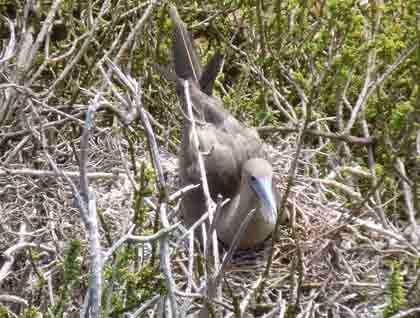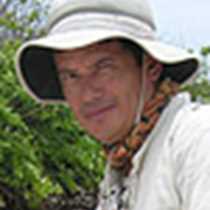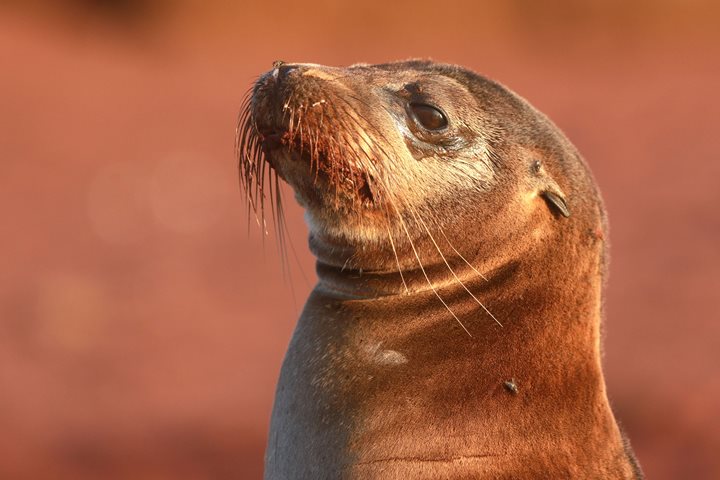Located on the northeastern tip of San Cristobal, Punta Pitt is one of the few places in the islands that you can see all three species of boobies and the smallest of them, the red footed booby, is the most common in this part of the archipelago. Early in the morning and after a long navigation from Santa Cruz Island, we dropped anchor in front of a gigantic, eroded tuff formation with hillsides covered in dry vegetation, mostly palo santo trees and some shrubs.
After breakfast we headed to the landing beach where some sea lions and marine iguanas rested indifferently while juvenile red footed boobies and frigate birds glided in the sky looking for fish. Walking along the beach, we tried to find some olivine and other tiny crystals which shined with the sun. We arrived at the beginning of the trail, which looked narrow and eroded by water during past raining seasons. Uphill the landscape changed dramatically with vertical cliffs and black lava fields, results of eruptions which occurred long ago. From the highest point the view was magnificent. The blue ocean looked calm, the black rocks were being hit by waves, Nazca boobies with their unmistakable white color nested along the edge of the cliffs.
It was very sunny and windy when we finally arrived to the red footed boobies nesting area. We observed many of them making their nests, collecting some twigs which they cut from trees and bushes. One of them was incubating its egg, while on the other side of the cliff a couple was mating on a perfect conical nest. Downhill we observed another nest where a beautiful chick showed us its fluffy white feathers which contrasted with its black bill and legs. Far away from the ocean some marine iguanas were covered in dust while busy digging holes. They were making their nests, leaving burrows and footprints along the trail.
After the hike we arrived to the landing beach, where our guests had a chance to cool off by swimming or snorkeling from the beach. Some curious sea lions approached us as if inviting us to swim with them. There were also some marine iguanas swimming and some boobies in a feeding frenzy catching small fish close to the seashore.
In the afternoon the ship moved farther south to Kicker rock, also known as “Leon Dormido” in Spanish. There we had a chance for our last snorkel around this tuff formation in the middle of the ocean. With calm waters, excellent weather conditions and great visibility, we headed in Zodiacs to the foot of this gigantic rock. As soon we got in the water we observed sea turtles, Galapagos sharks, white tipped reef sharks and some spotted eagle rays that swam very close to us. The vertical cliffs were covered with all kinds of life forms, such as colorful sponges, sea stars, barnacles and coralline algae which contrasted with the deep blue ocean. Probably the highlight of snorkeling were the hammerhead sharks. They swam fearlessly close to the surface, showing their heads and huge bodies, which made us feel small in size compared to the beautiful creatures. What great snorkeling!!!
We finally came back onboard where, with the last beams of sun, we circumnavigated Kicker Rock observing Nazca boobies and frigate birds nesting on the highest part of that gigantic rock. The beautiful sunset punctuated our adventure perfectly, with wonderful memories of incredible creatures which captivated us during this unforgettable week.







